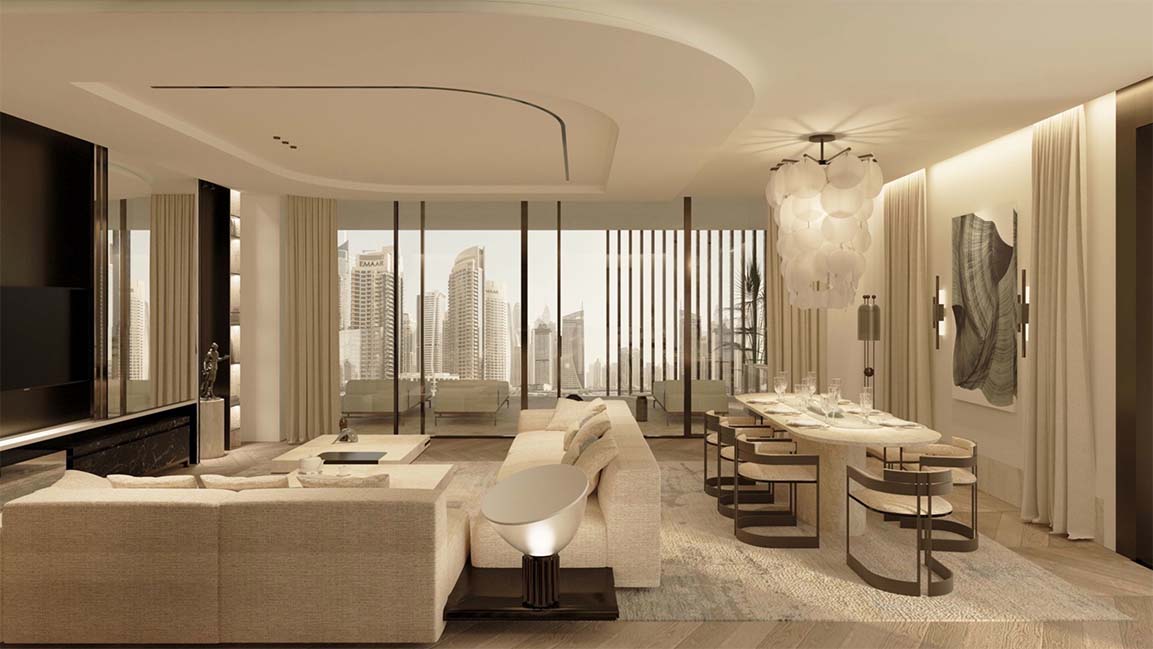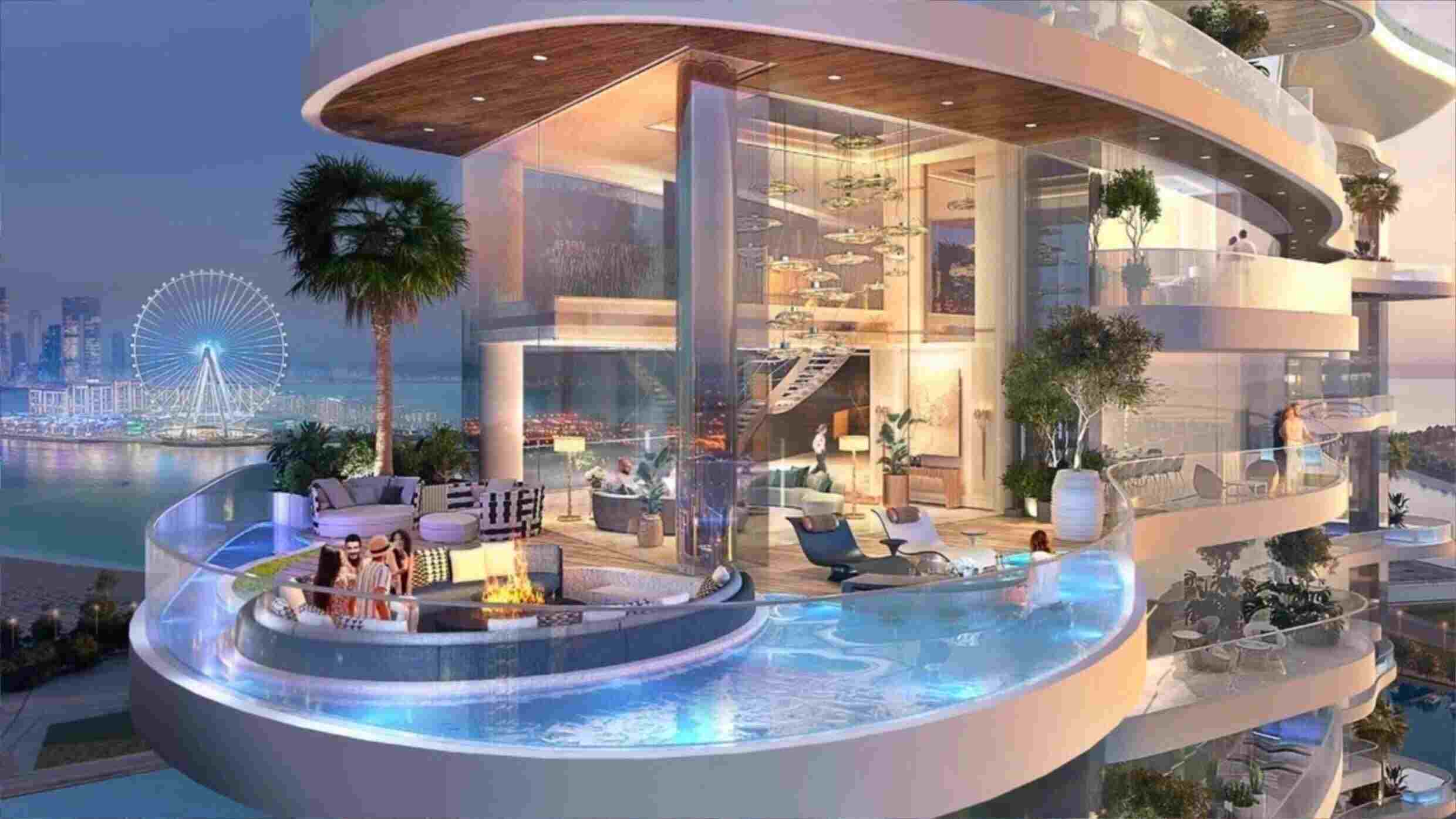- | 9:00 am
This is how new-age millionaires are redefining luxury living in the Middle East
What motivates the HNWI home buyer today? Real estate developers say it’s sustainability and design

A two-story villa with a pool and driveway may be an ideal house for many, but millionaires seek much more. Imagine a home with an automation system to control the lighting, climate, security, intercom, and entertainment. That’s not all. Bespoke walnut flooring, a glazing system, and two kitchens – a show kitchen and a wet kitchen – fitted with built-in Poggenpohl and Gaggenau appliances.
A primary bedroom suite with a whirlpool Jacuzzi bathtub, a conveniently situated kitchenette, and three add-on bedrooms with bathrooms that feature Fantini rain showers. Outside, landscaped views include Washingtonia trees, pebble pathways, sprinkler irrigation, and outdoor lighting.
A new-age millionaire might consider investing in a property like this. But the demands are changing, as are their cognitive needs.
According to a recent report by Global Luxury Market Insights 2022, the world’s wealthy population (those with a net worth exceeding $5 million) grew by nearly 20% in 2021. Wealth growth rates rose almost 25% during the same period, leading to a surge in luxury real estate demand.
Experts say the surge in demand for luxury real estate can be attributed to several factors, including the growing appreciation for homes that fulfill a range of needs such as security, community, work, and wellness.
This trend, and the desire for bigger and better homes in new locations, have created an unprecedented demand for luxury homes.
“The emotional needs of millennial high-net-worth individuals (HNWIs) are changing, leading to a growing demand for properties that offer a more well-rounded and holistic living experience,” says Dean Foley, Associate Partner, Residential Project Sales and Marketing – Knight Frank Middle East.
MILLENNIAL MILLIONAIRE EFFECT
The impact of younger generations of luxury customers on the market is multifaceted.
“We anticipate this trend to persist and are dedicated to providing properties that cater to the changing needs of our customers,” Foley adds.
Luxury real estate has long been a staple in the Middle East, and with the economy bouncing back strongly, the demand for high-end properties is expected to rise.
“These customers have distinct preferences in design, technology, and amenities, as well as a strong interest in sustainability. They desire more flexibility in how they utilize their homes,” says Pawan Kachroo, Managing Director of Khamas Group.

Courtesy: The Ritz-Carlton Residences, Dubai, Business Bay
Khamas Group, recently partnered with Marriott International to introduce The Ritz-Carlton Residences, Dubai, Business Bay, offering buyers a property that gives a hotel-like experience to a cozy home-like environment, reflective of the new-age millionaire’s demands.
Located in the Dubai Water Canal district, The Residences have a limited collection of 73 furnished apartments and penthouses, providing residents unparalleled luxury. Owners get to customize design options to make each residence feel “unique, luxurious, and personalized,” adds Kachroo.
New-age buyers demand digital experiences. Foley says they are driving the industry to become more innovative and technology-focused. In addition, they prioritize eco-friendly and socially conscious developments.
Experiential properties is another trend. “There is a growing interest in properties that draw inspiration from high-end fashion, art, and design, as well as those that offer a strong sense of privacy and security. For them, it is more than just a place to live, but also a statement that matches their ambition and aspirations,” Foley says.
HNWIs are looking out for deeply personal, avant-garde lifestyles. “They expect to find wellness facilities, private pools, high-end dining options, world-class entertainment, and more,” says Kachroo.
Partnerships with luxury, designer, and hospitality brands have been pivotal in creating bespoke experiences and environments that reflect clients’ lifestyles, adds Kachroo.
“Branded residences are seeing a surge in demand all over the globe. This sector has grown by over 150% in the last 10 years, with many more branded projects in the pipeline for the future,” says Rennie Sanger, Senior Off Plan & Investments Consultant at haus & haus.
According to a report, sales of single-family luxury homes, representing the top 10% of any given market, increased by almost 15% in 2021, while prices saw a 20% rise compared to 2020.
Kachroo and Foley say that houses are purchased for multi-generational living.
However, there are other reasons why HNWIs purchase houses in the region. Other than passing it on as inheritance for the next generation, today’s HNWI is looking for a secondary residence that reflects their style.
According to Foley, branded residential real estate has experienced a significant increase in activity due to high demand and a supply shortage.
DAMAC Bay by Cavalli is another example. The waterfront development is located in the Dubai Harbour. The three towers have brings ocean views to each unit – intertwined by a Cavalli inspired bridge that coils around each building.

Courtesy: DAMAC Bay by Cavalli
“These branded apartments with designer interiors have turned the heads of homeowners and investors alike,” adds Sanger.
“Branded living spaces offer more exclusive, hotel-style facilities and services. There’s also a huge focus on lifestyle, comfort, and a luxury living experience. We expect branded residences to keep gaining popularity in the region,” he adds.
LIVING FOR THE MOMENT
Despite their disposable income, experts say, HNWIs today are much more cautious about investing in property than their predecessors. They have lived through a pandemic and are aware of economic uncertainty; hence they spend more time buying a new home.
Real estate companies are adapting to this new reality by offering competitive payment plans and designing properties that provide an exceptional lifestyle experience, Kachroo adds.
The pandemic has also made millionaires reflect more, leading to a “live for the moment” attitude.
“This attitude will persist among some individuals, but we are also seeing a greater appreciation for the quality of life and meaningful experiences,” says Kachroo.
The pandemic also reminded people of the importance of family, community, and social connection.
“There’s rising demand for larger properties that can accommodate extended families. This shift is driven by cultural factors and a desire for a more communal and family-oriented lifestyle. In response, developers are adapting by constructing larger, family-friendly units and integrating communal spaces that foster interaction and community-building,” says Foley.
As the demand for highly personalized, ultra-luxe spaces continues, “People are now thinking about their long-term future, and this trend is expected to continue in the coming years,” adds Foley.








































